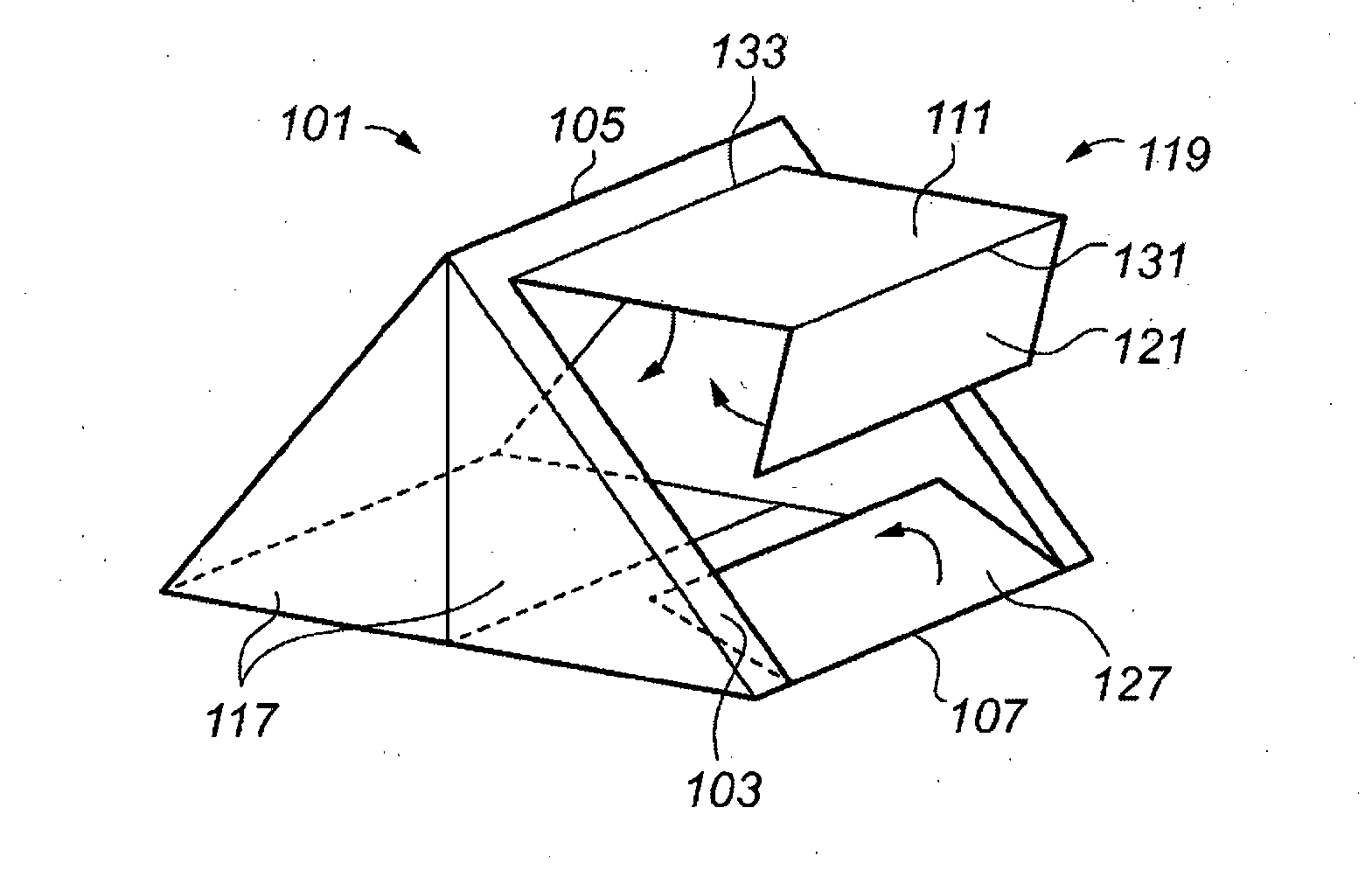Emergency shelter
a shelter and emergency technology, applied in the field of shelters, can solve the problems of increasing the likelihood of further devastating events, many buildings and especially temporary shelters in recovery areas, and many buildings in recovery areas, and achieve the effect of rapid deployment and easy assembly
- Summary
- Abstract
- Description
- Claims
- Application Information
AI Technical Summary
Benefits of technology
Problems solved by technology
Method used
Image
Examples
Embodiment Construction
[0025]The building according to the present invention is adaptable between a first normal configuration and a second wind-resistant configuration, preferably by relative movement of at least two space enclosing elements of the building.
[0026]Preferably, at least a portion of each of the at least two space enclosing elements of the building are space enclosing in at least the first configuration. Preferably, at least a portion of at least one of the space enclosing elements of the building is a space enclosing element of both the first and second configuration. More preferably, at least a portion of each of the at least two space enclosing elements, the relative movement of which facilitates the adaptation of the building between its first and second configurations are space enclosing elements in both the first and second configurations.
[0027]By space enclosing elements, it is meant elements at least a portion of which separate the interior of the building from the exterior of the bu...
PUM
 Login to View More
Login to View More Abstract
Description
Claims
Application Information
 Login to View More
Login to View More - R&D
- Intellectual Property
- Life Sciences
- Materials
- Tech Scout
- Unparalleled Data Quality
- Higher Quality Content
- 60% Fewer Hallucinations
Browse by: Latest US Patents, China's latest patents, Technical Efficacy Thesaurus, Application Domain, Technology Topic, Popular Technical Reports.
© 2025 PatSnap. All rights reserved.Legal|Privacy policy|Modern Slavery Act Transparency Statement|Sitemap|About US| Contact US: help@patsnap.com



